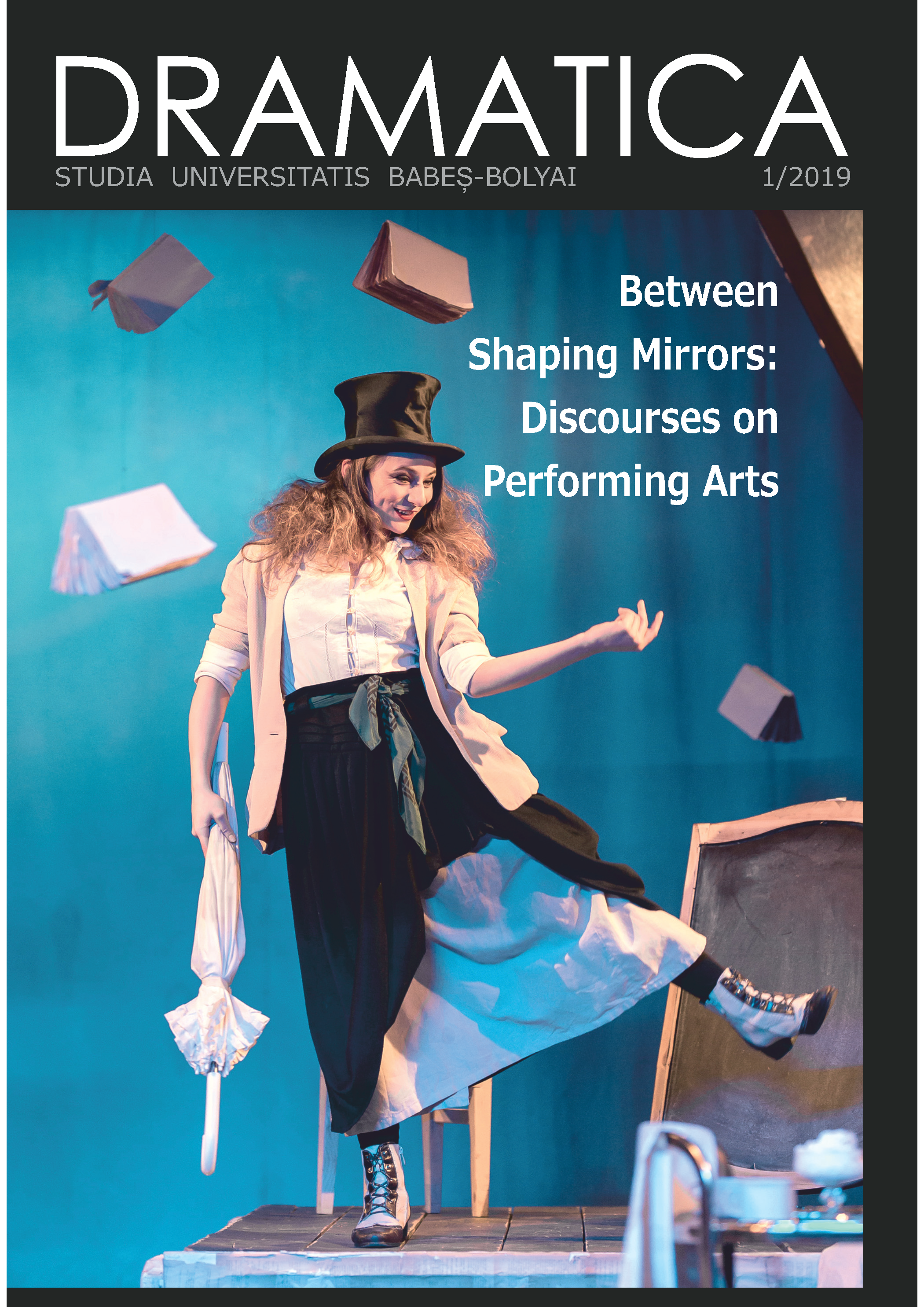The Experiential Turn: Ways of Exploring the Past Through Enhanced Senses in Digital Performance Arts
DOI:
https://doi.org/10.24193/subbdrama.2019.1.13Keywords:
digital interactive performance, digital technology, human-machine interactionAbstract
Digital technology research and artistic practice influence each other regarding user sensory experience. On the one hand, research on new technology brings a different dimension to performing and cinematic arts offering the user the possibility of exploring the past through enhanced senses. On the other, in the field of human-computer interaction, there is an increased interest in the aestheticization of experience, a special attention being given to performance and theatricality, considered to be the basis for new paradigms in design and operating systems. I refer to the cross-disciplinary encounters as being “experiential turns”, a series of innovations that could be the basis of new paradigms of design and operating systems, with applicability in both technology and creative industry. The paper will explore some art works that are representative for the experiential dimension of technologically mediated performance art.References
BENFORD, Steve, and Gabriella Giannachi. Performing Mixed Reality. Cambridge, MA: The MIT Press, 2011.
HEITLINGER, Sara, and Nick Bryan-Kinns. “Understanding Performative Behaviour within Content-Rich Digital Live Art.” Digital Creativity 24, no. 2 (June 2013): 111–18. https://doi.org/10.1080/14626268.2013.808962.
“MY FRIEND – Instalație Performativ Experimentală.” Teatru Fix, n.d. http://teatrufix.ro/my-friend-instalatie-performativ-experimentala.
SPENCE, Jocelyn, Stuart Andrews, and David M. Frohlich. “Now, Where Was I? Negotiating Time in Digitally Augmented Autobiographical Performance.” Journal of Media Practice 13, no. 3 (September 1, 2012): 269–84. https://doi.org/10.1386/jmpr.13.3.269_1.
SPENCE, Jocelyn, David Frohlich, and Stuart Andrews. “Performative Experience Design: Where Autobiographical Performance and Human–Computer Interaction Meet.” Digital Creativity 24, no. 2 (June 2013): 96–110. https://doi.org/10.1080/14626268.2013.808964.
UDSEN, Lars Erik, and Anker Helms Jørgensen. “The Aesthetic Turn: Unravelling Recent Aesthetic Approaches to Human-Computer Interaction.” Digital Creativity 16, no. 4 (January 2005): 205–16. https://doi.org/10.1080/14626260500476564.
Downloads
Published
How to Cite
Issue
Section
License
Copyright (c) 2019 Studia Universitatis Babeș-Bolyai Dramatica

This work is licensed under a Creative Commons Attribution-NonCommercial-NoDerivatives 4.0 International License.


